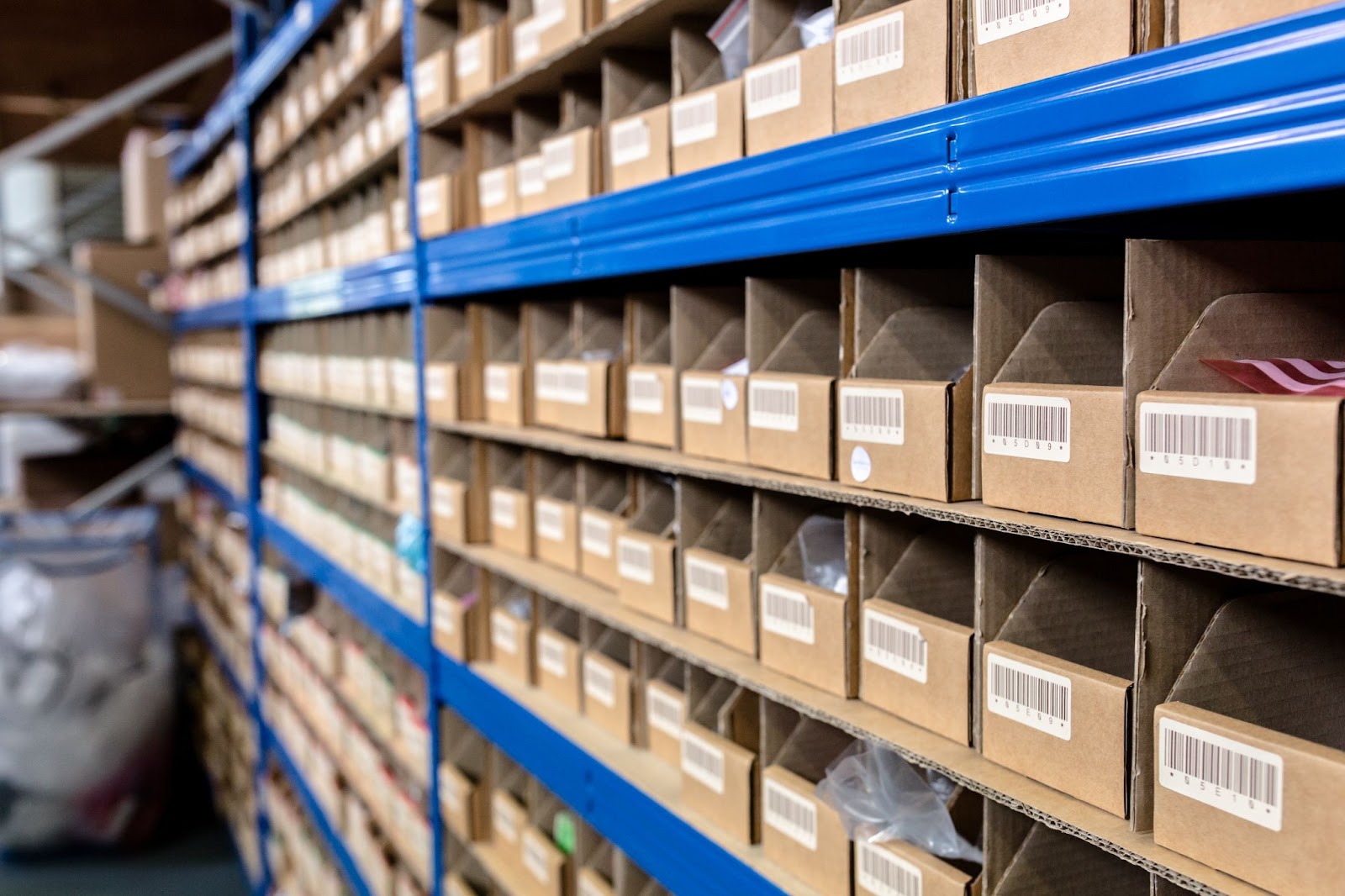Time to read: 5 min
Chefs create recipes. Hardware Engineers create BOMs (Bill of Materials) and SOPs (Standard Operating Procedures). The BOM is an ingredient list for building your product, and the SOP is the set of instructions on how to build it.
In this article, we’ll explain how to construct an excellent ingredients list that will help you clearly communicate your product’s material specifications for your manufacturing partner.

Anatomy of a Basic Bill of Materials
An effective BOM doesn’t have to be generated by sophisticated software — it can be as simple as an Excel spreadsheet. Good organization is the key to a good BOM, which also makes you look professional to your vendors, so they’re less likely to try to sneak one past you!
BOMs are usually broken up into several categories, according to engineering areas of responsibility (AoRs). MEs (mechanical engineers) and EEs (electrical engineers) make their own component lists during development, from which the pre-production BOM is assembled.
Categorization makes it easy for you, your colleagues, and vendors to find what they need in your BOM. For example, the PCBA (printed circuit board assembly) manufacturer only cares about the PCBs and components that must be surface mounted onto the boards — the packaging components usually don’t need to be procured for the early proto-builds.
Here’s an example of the typical categories and components of a consumer hardware product’s BOM; if this BOM was built in an Excel spreadsheet, each category would be its own tab.
| Department Commonly Responsible (AoR) | BOM Category | Examples of BOM Items |
| ME | Custom Manufactured Parts (Made-to-Spec) | -Injection Molded Housing – Buttons – Light Pipe -Die-Cut Double-Sided Adhesive Tapes -Foam Shims -Elastomer Gaskets |
| ME | Purchased Parts (Off-the-Shelf) | -Battery -Screws -Speaker -Vibration Motor -Accessory USB Cable |
| EE | PCB(s) | -Main PCB -Peripheral PCBs |
| EE | PCBA Components | -Resistor -Capacitor -IC -LED -Connectors -Sensors -Switches |
| ME/Marketing | Packaging (Labels, Boxes) and Information | -Pulp Tray -Protective Film -Box -Master Carton -Instruction Manual -Serial Number and Lot Stickers -Wafer Stickers (Pagaging Seal) |
Within each category, you can further organize your BOM by cost. Electronic component manufacturers typically charge a margin on all components they source for you. However, the cost to source expensive (chips) and low-priced components (screws) is not that different — and you can negotiate with the manufacturer for a lower margin on higher-priced items over a certain threshold.
Best Practices for Building a Bill of Materials
Here are a few best practices to consider as you’re building your BOM:
Figure out a part number scheme before building a BOM
It’s standard practice for each part to have a unique part number. In your BOM, the part number is the foremost identifier of the part, with a secondary text description that makes it easier for humans to read.
There are different schools of thought on part numbering systems:
The simplest is a purely sequential system where the part number doesn’t give any information about the part. For example, a screw and a resistor entered into the system adjacent to each other will be parts 001514 and 001515. This has the advantage of being lightweight in implementation; however, it’s not very human-readable. Consider using part numbers easier for humans to read in your BOM for manufacturing as well, to help mistake-proof your manufactured assemblies.
A different approach is to use an intelligent system in which the part number denotes what type of part it is. For example, a screw will be part SCRW1014, and a resistor will be RES2208. This is more human-readable, but as the types of parts in your master part library increases, you’ll need to make new categories and define new rules (see example P/N designation for a super simple BOM in the image below).
Regardless of what scheme you choose, make sure you keep a master part list, even if it’s just another spreadsheet. If you’re interested in learning more about part number schemes, read this.

Document control your BOM
A BOM is a living document throughout a product’s development and production. When you make changes to a part or switch out a component, you need to update the BOM, which becomes a new version of the document.
I usually add a tab named “revision history” to my spreadsheet BOM. Each time I update the BOM, I save it as a new file, insert a new line to the top of the “revision history” tab, increase the version number, and describe briefly what changed. For example:
| Rev Number | Date of Revision | Revision Detai |
| 1 | 4/23/2022 | Removed Part PCBA-37925 |
| 2 | 7/23/2022 | Replaced Part SCW-80021 with Part SCW-93206; Added Part PKG-12459 |
Before any pre-production build, have all the engineers review the latest BOM together, then lock down this version for the build and communicate its version number to the manufacturing partner.
Pro-tip: If you would like further instruction on BOM building, check out our webinar on How to Format Your Bill of Materials.
Use engineering software to build a BOM
To save time when you first build a BOM, make use of software features you may already be using for development.
In 2022, most MCAD software programs have a BOM export feature for assemblies. GrabCAD Workbench is a great PDM (product data management) tool to help you version control your parts, and generate BOMs. It’s also free!
Pro-tip: Check out this help center article for building a BOM in SOLIDWORKS.
For EEs, Altium has BOM generation features. However, building a parts library in Altium can be a lot of work. PartsList can help make this process easier—it imports part attributes from components on Digikey, Mouser and many other sites.
Also, consider using engineering software to build a BOM template. Share the template within your organization so your BOMs are standardized, and maybe throw in a company logo to make them easily identifiable.
Here are some key elements of a BOM to include in your BOM Template:
- BOM Revision Level
- Part Number
- Part Name
- Part Description
- Procurement Type or Source
- Quantity per Assembly
- Unit of Meausre for Quantity
- Notes
Implement PLM when you’re ready
Keeping track of BOM spreadsheets is bearable with one product, but when you have multiple products, it can become a headache quickly. A PLM (product life management) system is a BOM, master parts list, and process management tool, all in one. I’ve had good experience with Arena PLM, and Autodesk PLM 360 is a nice-looking contender, too.
Main Takeaways
Whether you’re designing consumer electronics products, aerospace components, medical devices or the next robotic innovation, many people are involved in building a product. A BOM is a critical communication document that gets engineers, procurers, and manufacturers on the same page. You need a BOM before any sourcing activities can happen, so start working on it as soon as your design is somewhat stable.
Sourcing Simplified – Start Your Next Project With Fictiv
And Fictiv is here to help source all custom manufactured parts your designs need. With our auto-generated 2D Drawings within our platform, creating your BOM from a solid model is easy — and our CNC machining service can create your parts in as little as 2 days!
Fictiv is your operating system for custom manufacturing that makes part procurement faster, easier, and more efficient. In other words, Fictiv lets engineers, like you, engineer. Create an account and upload your part to see what our instant quote process, design for manufacturability feedback, and intelligent platform can do for you.










